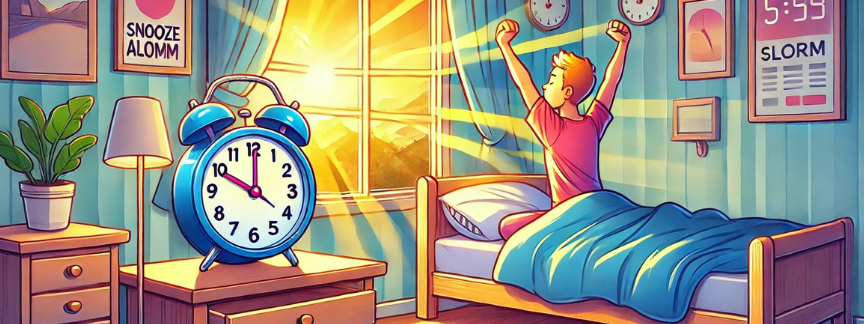
Chapter 2
Sleep
“A ruffled mind makes a restless pillow.”
– Charlotte Brontë



Optimize Nap Times for Better Nighttime Sleep
Manage naps carefully to avoid disrupting your nightly sleep schedule.
Nap too long or too late, and you might struggle to fall asleep at bedtime.
Aim for a quick, 20-minute nap in the early afternoon, ideally just after lunch, to refresh without affecting your nighttime sleep.






Unplug Before Bed
Reduce exposure to electronic devices like smartphones, tablets, and laptops an hour before bedtime to help your brain unwind.
The blue light emitted by these devices can inhibit melatonin production, disrupting your sleep cycle.
Disconnecting allows your body to naturally prepare for sleep.






Set a Single Alarm
Avoid setting multiple alarms as it can lead to a habit of snoozing and oversleeping.
Train yourself to wake up at the first ring by using just one alarm.
Initially, it might feel risky, but the urgency prevents excessive snoozing and promotes waking up on time.






Use Breathing Techniques
Employ the 4-7-8 breathing method to slow your breath and relax your body, aiding in faster sleep onset.
- Exhale fully through your mouth, making a whoosh sound.
- Inhale quietly through your nose to the count of four.
- Hold your breath for seven seconds.
- Exhale through your mouth to the count of eight.
Repeat this cycle four times. If needed, adjust the counts to 4-4-4 for comfort.






Daily Exercise
Incorporate at least 20 minutes of exercise into your daily routine.
Walking or light exercise during the day optimizes sleep by using energy and adjusting body temperature.
Avoid vigorous workouts close to bedtime as they may disrupt the body’s wind-down process.






Feel free to share with your colleagues
Give feedback, ask questions or request new resources


